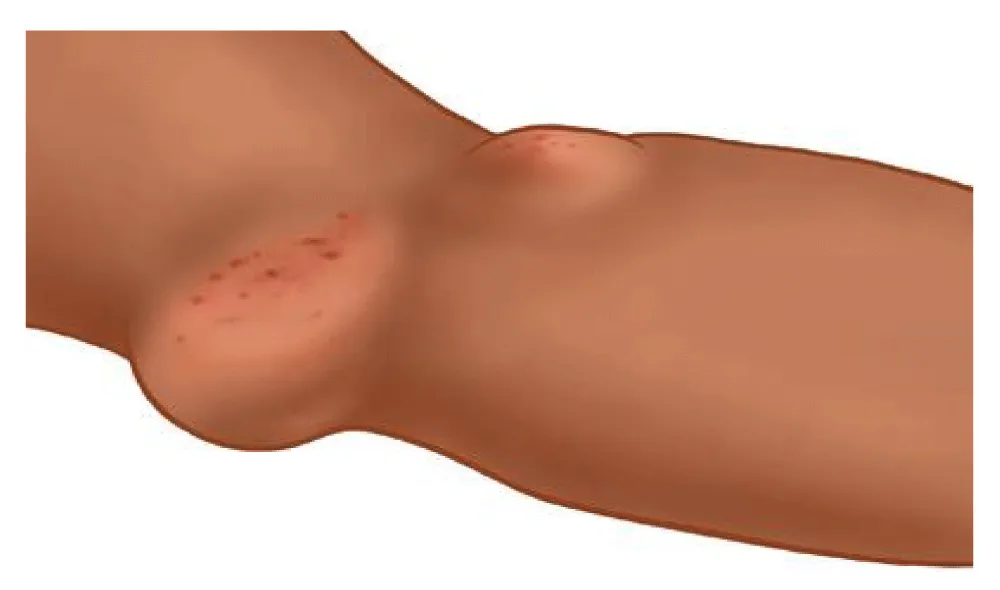Archives of Renal Diseases and Management
The Story of a Young Man Born in 1967 on Dialysis for 44 Years
Duranti Ennio*
Director of the Nephrology and Dialysis Department, Arezzo Hospital, Italy
Cite this as
Ennio D. The Story of a Young Man Born in 1967 on Dialysis for 44 Years. Arch Renal Dis Manag. 2024;9(1):012-014. Available from: 10.17352/2455-5495.000047Copyright
© 2024 Ennio D. This is an open-access article distributed under the terms of the Creative Commons Attribution License, which permits unrestricted use, distribution, and reproduction in any medium, provided the original author and source are credited.A man born in 1967, was affected by Prune-Belly Syndrome, kyphosis, respiratory failure, and convulsive episodes. In addition, he had also undergone surgery to reconstruct his urinary tract and bladder. At 7 years of age, a Chronic Kidney Disease (CKD) was diagnosed and in 1979 he began haemodialysis, at the Siena hospital. From 1980 he continued Hemodialysis (HD) three times a week in Arezzo Hospital and therefore this year he “completed” 44 years of extracorporeal dialysis.
He has never been declared suitable for transplant due to bladder malposition and respiratory insufficiency. Despite congenital physical problems and dialysis the patient leads a normal social life, is politically and socially engaged, and is one of the patients of our Dialysis Center who is most attentive to the needs of other dialysis and transplant patients.
The secret to living many years for a patient on dialysis involves a combination of medical management, lifestyle adjustments, and emotional well-being. Here are several key factors [1]:
- **Strict Adherence to Dialysis Schedule:** Consistently attending dialysis treatments is critical for removing waste and excess fluids from the body. Skipping sessions can lead to serious complications.
- **Managing Underlying Conditions:** Many dialysis patients have chronic conditions such as diabetes or high blood pressure. Keeping these under control through medication, diet, and regular monitoring is essential for overall health.
- **Healthy Diet and Fluid Balance:** Following a kidney-friendly diet that limits salt, potassium, phosphorus, and protein intake can help reduce the burden on the kidneys. Patients should also monitor fluid intake to avoid overloading the body with fluid.
- **Regular Exercise:** Low-impact exercises, as recommended by a doctor or physical therapist, can help maintain cardiovascular health, muscle strength, and overall well-being.
- **Mental and Emotional Health:** Dialysis can be physically and emotionally challenging. Support from family, counseling, or support groups can help manage stress and anxiety, which can impact both mental and physical health.
- **Avoiding Infections:** Dialysis patients are at higher risk of infections, especially if they have a dialysis access point (such as a fistula, graft, or catheter). Proper hygiene and timely medical attention are crucial.
- **Regular Medical Check-ups:** Regular visits to a nephrologist and other specialists ensure that the dialysis regimen is working effectively and that any potential complications (e.g., bone disease, anemia, heart issues) are addressed early.
By combining these strategies with a strong support network and a positive outlook, dialysis patients can increase their chances of living a long and fulfilling life.
The question “How long do you live on dialysis?” [1-3] can lead to a very sobering reality. But the answer depends on a wide range of variables: from an average life expectancy of four years to scenarios with some patients enjoying a generous 25 years of life. Doctors estimate a patient’s chance of survival by looking at the percentage chance of living one, two, five, and 10 years after starting treatment. This type of formula is used across many diseases, including heart disease, cancer, and dialysis patients. In general, survival rates for patients on dialysis are poor. Based on the United States Renal Data System (USRDS) report, the adjusted survival rate for patients on Hemodialysis (HD) is 57% at 3 years after onset of End-Stage Kidney Disease (ESKD) as compared to 68% for patients receiving Peritoneal Dialysis (PD). The 5-year survival for patients receiving HD and PD is 42% and 52%, respectively. With deceased donor kidney transplantation, 3-year survival improves to 85%. For comparison, the general population survival rate (matched for age and sex) is 92% - 94%. The 5-year survival for patients on long-term dialysis has been shown to be either longer or shorter than patients with cancer, depending on the type of malignancy in an Italian registry of patients on dialysis.
Case report
In this “clinical case” we describe a man born in 1967, affected by Prune-Belly Syndrome, diagnosed at birth. His anamnesis also included kyphosis, respiratory failure, and convulsive episodes. In childhood, surgery to reconstruct the urinary tract and bladder.
At 7 years of age, the patient presented with recurrent fevers, widespread edema, and a CKD was highlighted. He started medical therapy and a low-protein diet, but in 1979 he began haemodialysis, first at the Siena Hospital and then at the Arezzo Hospital from 1980.
Since that date, the patient has continued HD three times a week in Arezzo and therefore this year he “completed” 44 years of extracorporeal dialysis.
He has never been declared suitable for transplant due to bladder malposition resulting from Prune-Belly Syndrome and restrictive respiratory insufficiency. In the history of these 44 years, we note 3 surgical interventions for correction of the valgus knee, total parathyroidectomy in 1991, and right carpal tunnel surgery in 2002. No more convulsive episodes recorded. He has undergone 4 interventions for Arteriovenous Fistula (AVF), and currently has an AVF in the crease of the elbow on the right (Figure 1).
The patient started dialysis by performing acetate-dialysis and over the years various dialysis methods have been used, in hemodialysis and hemodiafiltration. Currently, the patient is undergoing AFB (Acetate Free Biofiltration) with variable potassium, which began about 15 years ago.
The patient’s current tests like all the checks carried out every two months over the years show at the beginning of dialysis Azotemia = 162 mg/dl (46 at the end of dialysis), KT/V = 1.5, Creatinine = 11 .5mg/dl, K = 5.4 mEq/l, Ca = 9.3 mg/dl, P = 3.1 mg/dl, Total Proteins = 6.2 gr/dl, PTH = 11 ng/l, Hb = 12.0 gr/l. Blood pressure and echocardiographic checks are within the limits. Interdialytic weight gain of less than 3 kg. No episodes of hyperkalemia during his dialysis life.
In-home therapy with Allopurinol 150 mg, Sevelamer 2.4 gr, Vit. B Complex 1, Calcitriol 0.5 microg, Clopidogrel 75 mg, Ivabradine 5 mg, Pantoprazole 20 mg, and Iron Gluconate 62.5 mg /week intravenous in dialysis. The patient has had and has a normal social life, is politically and socially engaged, and is one of the patients of our Dialysis Center who is most attentive to the needs of other dialysis and transplant patients.
The patient often says that he was lucky to have been well treated and followed in our Center, allowing him to have reached 44 years of treatment, but certainly, he was also good at knowing how to manage his disease, to take care of himself and to know how to live with the three-weekly treatment. We thought it was significant to report this case, which is particular for the very long duration of the extracorporeal treatment.
Considerations related to the case
“We don’t yet know how long dialysis patients will live,” says the National Kidney Foundation. “We think some dialysis patients may live as long as people without kidney failure.” However, there are more direct statistics available. As you might expect, younger people survive longer on dialysis than older patients [3]. Eighty-eight percent of those under the age of 20 will live through five years of dialysis. Seventy percent of patients between the ages of 20 and 44 will survive through five years, 44 percent of those between the ages of 45 and 64 will live through five years of treatment, and only 21 percent of dialysis patients between the ages of 65 and 74 will survive through five years. The number drops to 10 percent for those over the age of 74. The average life expectancy for patients on dialysis is 5 to 10 years but many patients have lived well on dialysis for 20 or even 30 years.
Conclusion
In conclusion, it is our opinion that the long life of the patient on dialysis is linked to the acceptance of his condition as a hemodialysis patient with courage and patience, adapting his lifestyle to the particular clinical condition and the deprivations it may entail. Behavior that some patients often struggle to accept, with particularly serious consequences that can be fatal. Unfortunately, most of the patients who did dialysis with him in the early days are no longer there, he knows this, however, every time a new companion arrives in the dialysis room he is the first to welcome and explain the strengths and weaknesses of life on dialysis. So the affection that everyone feels for him is well-placed.
Ethical considerations
We declare that we have asked for the patient’s consent to publish his medical history.
- Murdeshwar HN, Anjum F. Hemodialysis. StatPearls [Internet]. Treasure Island (FL): StatPearls Publishing; 2024 Apr 27 [cited 2024 Dec 16]. Available from: https://pubmed.ncbi.nlm.nih.gov/33085443/
- Okubo N, Suwabe T, Oba Y, Ikuma D, Mizuno H, Sekine A, et al. A Half-Century Dialysis Survivor: Clinical and Autopsy Findings. Kidney Med. 2023;5(4):100612. Available from: https://doi.org/10.1016/j.xkme.2023.100612
- Suwabe T, Ubara Y, Inoue M, Kitajima I, Oohashi K, Nakano I, et al. What can we learn from a patient on dialysis for 42 years?. Clin Nephrol. 2014;81(6):427-434. Available from: https://doi.org/10.5414/cn107686

Article Alerts
Subscribe to our articles alerts and stay tuned.
 This work is licensed under a Creative Commons Attribution 4.0 International License.
This work is licensed under a Creative Commons Attribution 4.0 International License.


 Save to Mendeley
Save to Mendeley
